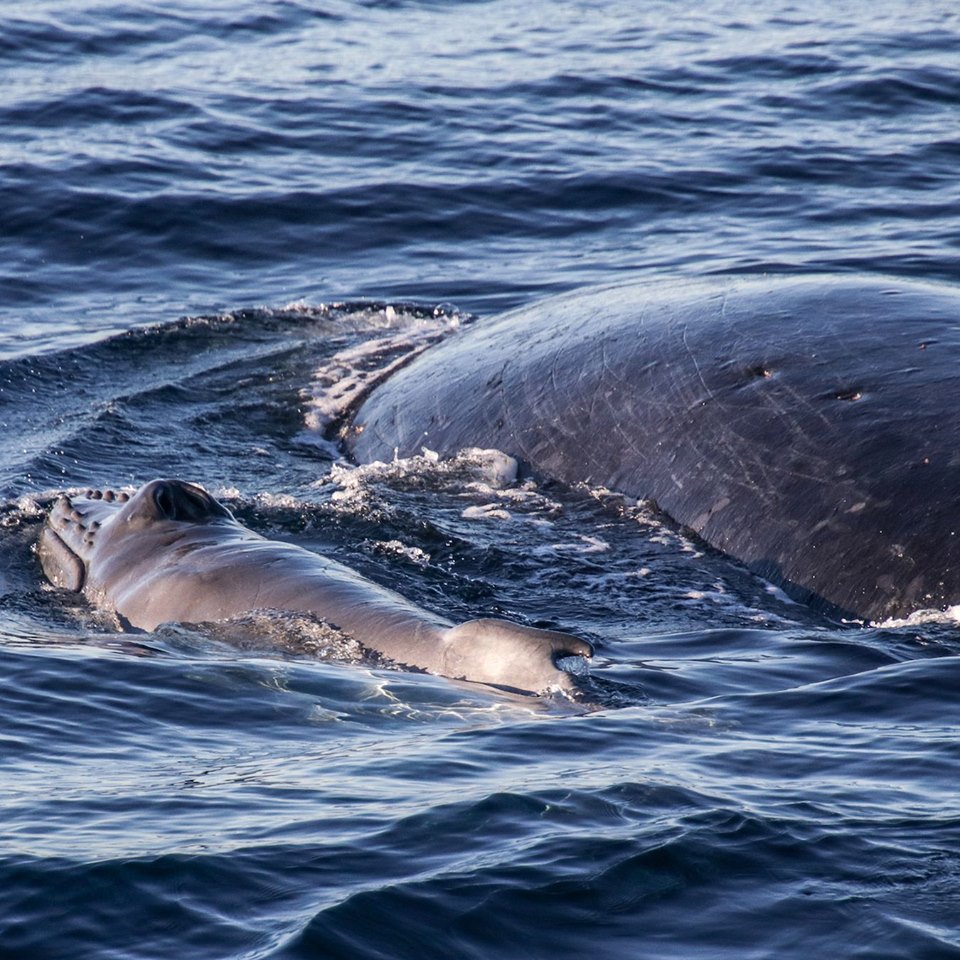Media Release
From: Griffith UniversityA team of researchers has found that migrating humpback whale mothers are giving birth more than 1000km south of their primary calving grounds off the Great Barrier Reef.
Griffith University marine scientist and Humpbacks & High-Rises CEO Dr Olaf Meynecke was one of three supervisors of visiting Griffith Centre for Coastal Management scholar Laura Torre-Williams from Massey University, New Zealand, who led the research that has been published in Marine and Freshwater Behaviour and Physiology.
The team conducted surveys of humpback whale mothers and newborn calves on-board three commercial whale-watching vessels from late May to early November, 2013-2016.
The surveys found that newborn calves were present in the Gold Coast Bay area from June until September, indicating that calving occurred regularly along the northern migration, more than 1000km outside the primary GBR calving grounds.
“We conclude that some humpback whales are utilising warm and shallow waters along south-east Queensland to birth their calves whilst migrating,” Torre-Williams said.
“Current published literature states that most humpback whales likely calve in the southern area of the GBR region, so newborns are generally not expected to be sighted on the northern migration in south-east Queensland.
“Suitable calving habitat for this species is believed to include warm (19 to 28°C), shallow, sheltered waters along coastlines or islands in tropical and subtropical waters.
“These findings may signify that this humpback whale population is calving further south than expected, and that the Gold Coast Bay offers suitable calving habitat. However, this area is not designated as a calving area and a number of threats to newborns are present.
“These include shark nets that may entangle naïve and curious newborns; jet skis operating at high speeds; recreational boats that get too close to mother and calf pods; and a proposed large cruise ship terminal to be located in the calving area.”
Humpback whales undertake long-distance migrations between important habitats, typically from feeding areas to breeding and calving area.
The data compiled for the study included: photographs of newborn calves with their mothers in Gold Coast Bay; sea surface temperatures (SST) associated with these sightings; water depth at which the sightings occurred; GPS positions of initial sightings and tracks of movement through the bay.
“The findings suggest that humpback whale calving occurs south of their traditional breeding grounds much more often than previously thought,” Dr Meynecke said.
“The study suggests that this calving is increasing and might either be a reflection of an expanding population or an adaptation to other environmental conditions, but future studies will need to be conducted to confirm these scenarios and are currently under way.
“Climate change-induced impacts on the food supply of these whales may play a part in the earlier than expected calving at this location.”
“This work underlines the importance of long-term monitoring and collaboration across disciplines and organisations.”
This work is part of a larger research program initiated by Dr Meynecke in collaboration with Humpbacks & High-Rises and local whale watch industry partners.
The study ‘Presence of newborn humpback whale (Megaptera novaeangliae) calves in Gold Coast Bay, Australia’ has been published in Marine and Freshwater Behaviour and Physiology.


